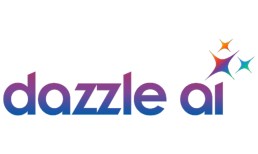“Boondoggle” may be a funny word, but to corporations, its effects are serious. Wasted, unnecessary spend is a cash flow trap, yet difficult to identify. Plus, the age-old saying rings true: One must spend money to make money.
So, how can a company prevent boondoggling while still freeing up capital for its employees to go out and win new business? This marks the next phase of the corporate travel and expense (T&E) management technology sector, said Eoin Landers, president and VP of product at new T&E firm SalesTrip.
The first iteration of the T&E technology space focused on automation, reducing the burden of manual data entry on expense reports and related processes. The second phase was the ability to provide managers with visibility into employee spend data.
Now, Landers told PYMNTS, the industry is quickly headed toward an era that lets managers wield that spend visibility in new ways, so executives can not only see how much an employee is spending, but analyze that spend against how much revenue a business trip actually generates for the company.
“People haven’t had the ability to have a mathematical formula of how much is spent to win business, against how much the business is actually making,” said Landers.
The reason can be traced back to siloed data. To analyze expenses against won-over business, noted Landers, companies must be able to interconnect and analyze customer relationship management (CRM) expense data. That’s the idea behind newly launched SalesTrip, which integrates with CRM platform Salesforce. Applications for this type of analysis are wide-ranging, with one of the most straightforward use cases in the ability for managers to analyze whether an employee’s business trip was worth the cost.
Advertisement: Scroll to Continue
At a deeper level, managers will be able to analyze multiple employees’ spend data from a single trip or event, and compare spending habits of professionals against each other. Landers offered one example of two sales team professionals, who each met their quarterly quotas and secured the same amount of business — yet, one did it at a much lower cost than the other. Managers could potentially organize bonus structures and other incentives to reward the employees who more efficiently and affordably win business, and provide those professionals with concrete data so they can understand expectations for spending.
“This is really about empowering [employees] to make much better decisions than before,” explained Landers.
Traditionally, he explained, organizations may be able to gain cost savings data from their managed travel programs and travel management company partners, but this information can often fail to provide actionable insight, and instead give generalized, vague guidance on how to cut back on expenses. Landers said this strategy lacks accuracy, describing the type of insight it delivers as “fuzzy.”
There are other applications for this kind of data, though Landers said SalesTrip will have to obtain significantly larger data sets to take advantage of sophisticated data analytics technologies like artificial intelligence (AI) and machine learning. Yet, if and when the company is able to build out its data pools, these technologies could offer business managers even deeper insights about their spending habits, and how they promote (or hamper) new business and revenue streams.
That could have significant implications on corporates’ overall financial health. Landers pointed to the idea of organizations being able to more accurately forecast their quarterly or yearly spend, to analyze average expenses during early-, mid- and late-stage sales cycles, and identify which periods have the highest and lowest returns on investment (ROIs) — advising the company, and investors, on expense forecasts the same way they advise on revenue predictions.
Another area with a lot of opportunity for machine learning is in nixing the travel freeze, Landers said, a scenario in which a company has gone over-budget and must freeze employee travel for a given period. There’s also the common “boondoggler,” the employee who somehow secures permission from a manager to go to a business event, but without a clear purpose (or value) for them being there. Deeper visibility to analyze expenses against CRM data means there will be no way for that employee to “hide” their attendance at these events.
Integrating T&E data with CRM may provide organizations with key insights into the ROI of business trips, but there are scenarios in which less quantifiable information must also be assessed against the cost of employee spend. For instance, while it may be straightforward to analyze an employee’s expenses on a business trip against the value of a new client contract resulting from that trip, more complicated insights — like how much employee travel promotes customer retention and loyalty — are less easy to assess.
Landers noted that SalesTrip, and the industry overall, is not yet in a position to be able to deliver that type of analysis. Yet, it could be where the T&E market is heading as it moves through its iterations of digitization and innovation.
“The strategic point of how important it was for customer loyalty — there are still areas of the business that aren’t yet totally quantifiable, to measure against a dollar amount,” he said. “That still remains an area of ‘gut feeling’ more than putting hard data against it.”




